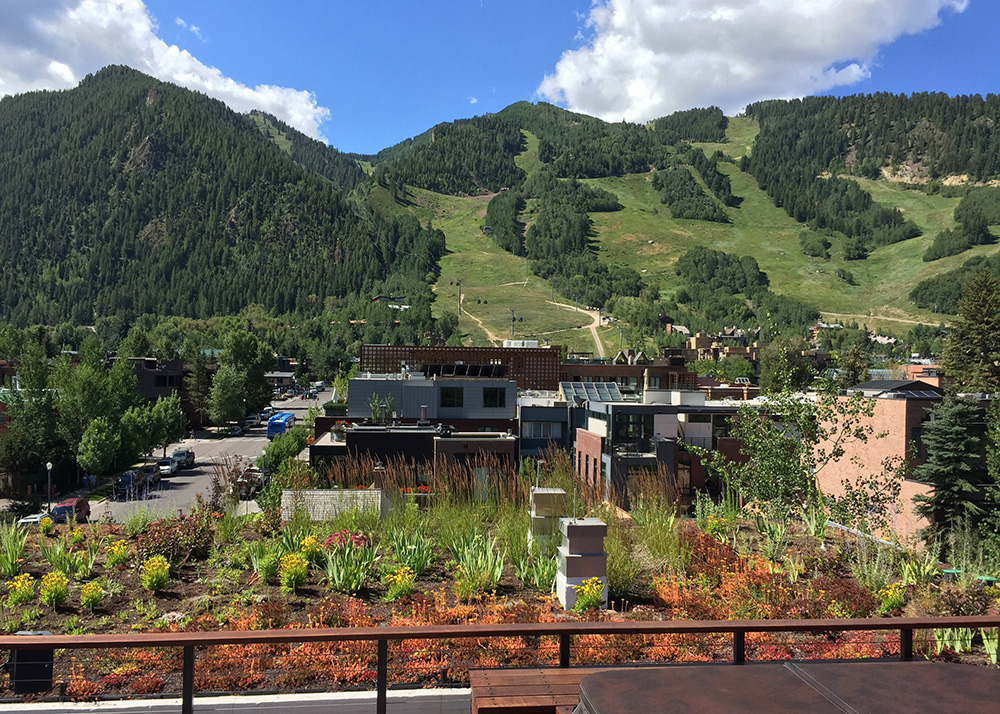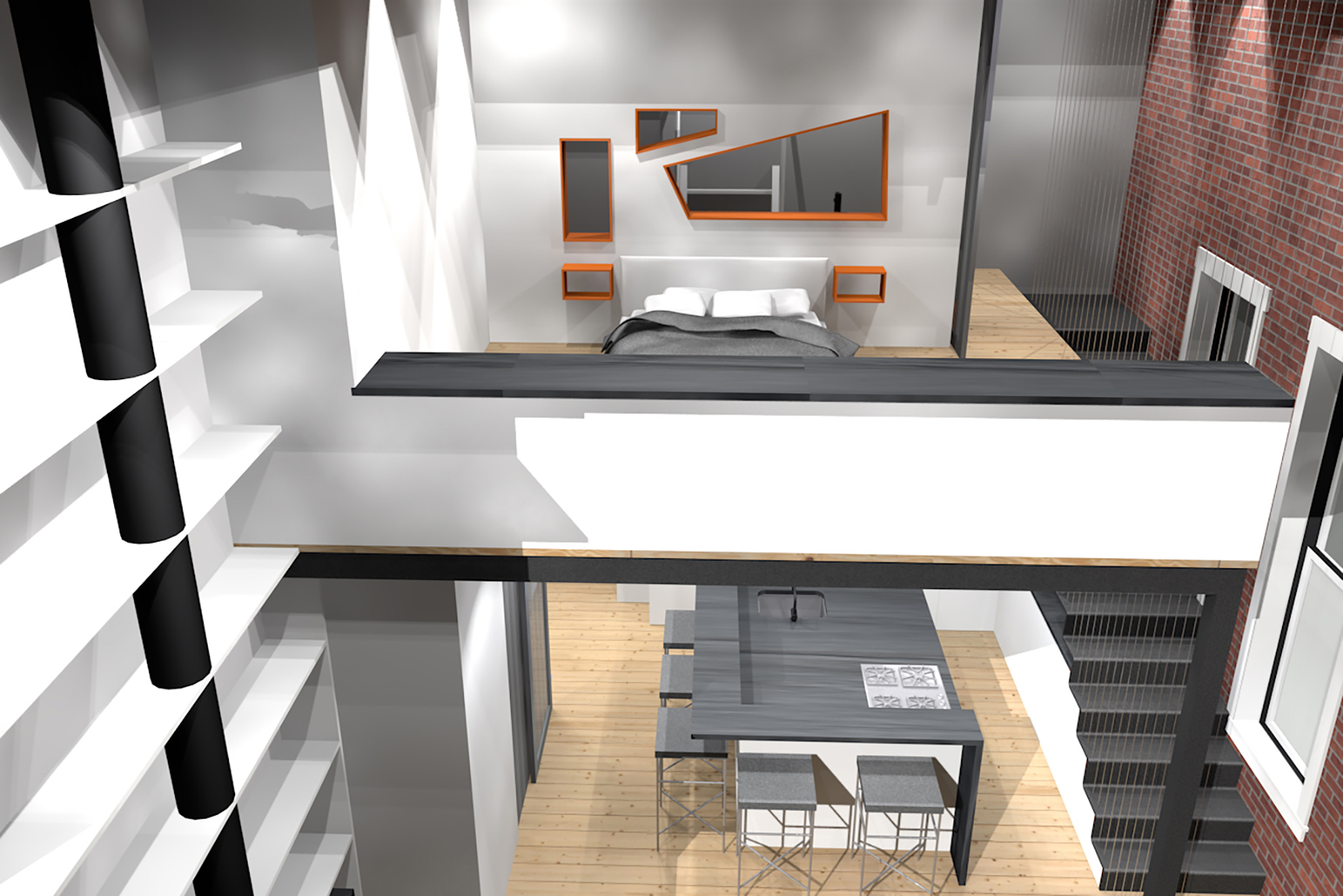Green roofs are an emerging architectural technology that have a host of environmental, economic and psychological benefits. David Johnston Architects (DJA) was one of the first architects to apply green roofs to commercial design in Aspen, Colorado with their mixed-use Spring Street Building built in 2009. Since then, a number of green roofs have been built and the concept has gained acceptance and support from the City.
What is a green roof?
A vegetative layer grown on a rooftop that take the place of a bare membrane, gravel ballast, shingles or tiles. The original inspiration for contemporary green roofs came from rugged Iceland, where sod roofs and walls have been used for hundreds of years. The sod roofs soon became popular throughout Scandinavia.
How does it work?
Using a layering system, a structure is built that enables plants to grow (soil substrate), water to drain (drainage layer) as well as absorb (rainwater retention layer). Then there are also rather traditional roof elements like insulation and a waterproof membrane that protects the building.
Are all green roofs the same?
Like most architecture, there is a vast spectrum of design styles and techniques when it comes to green roofs. There are two very basic types, and from there the sky is the limit, literally.
– Extensive Roofs – They have thinner and less numbers of layers, so are lighter, less expensive and consist of basic “ground cover” so are very low maintenance. Extensive green roofs are built when the primary desire is for an ecological roof cover with limited human access.
– Intensive Roofs – Also referred to as high-profile, they look like traditional roof gardens because a much wider variety of plant material can be included since growing media depths are increased. They often mirror elaborate gardens found in parks.
What are the benefits?
The upside to green roofs is rather profound. Below are a few of the main points.
– Increased natural thermal control
o Reduces heat island effect – Shade from vegetation as well as evapotranspiration reduce the temperature of the roof and ambient air by up to 90 degrees! In addition the amount of exposed roof is drastically reduced, thus less surface area to absorb and radiate heat.
o Increases insulation – During colder months, the depth of the roof adds insulation making it more thermally resistant, which keeps the warm air inside the building.
– Reduced greenhouse gas emissions – The need for less energy to heat and cool means less energy production, and thus less emissions.
-Better storm water management – Water percolates into the soil and is absorbed by the plants, rather than streaming into city sewage systems. DJA’s Spring Street Building was a catalyst for revamping the engineering guidelines for drainage in Aspen. Green roofs now get credits for storm water management.
– Food production – Especially if shaded, gardens can be used to grow herbs and vegetables.
– Aesthetic value – Simple but true, these roofs are lovely to look at compared to traditional builds.
Because of the host of benefits, green roofs are sprouting up throughout many large cities across the country and the globe. Depending on the structure, they can be implemented on existing buildings.
What is the cost?
The cost of green roofs vary immensely based on the type, building location, and more. A broad estimate is $10-40 per square foot.
How do you maintain them?
The maintenance also depends on the type and style of roof and garden. If you do perennial ground cover, then it regrows every year. As long as you water it property there is very little maintenance. On the flip side, if you have an intensive garden with annuals and lawns, it will take as much work as a traditional garden. Automatic watering systems help minimize work. Drip irrigation is often used as well as sprinklers with wind sensors.





